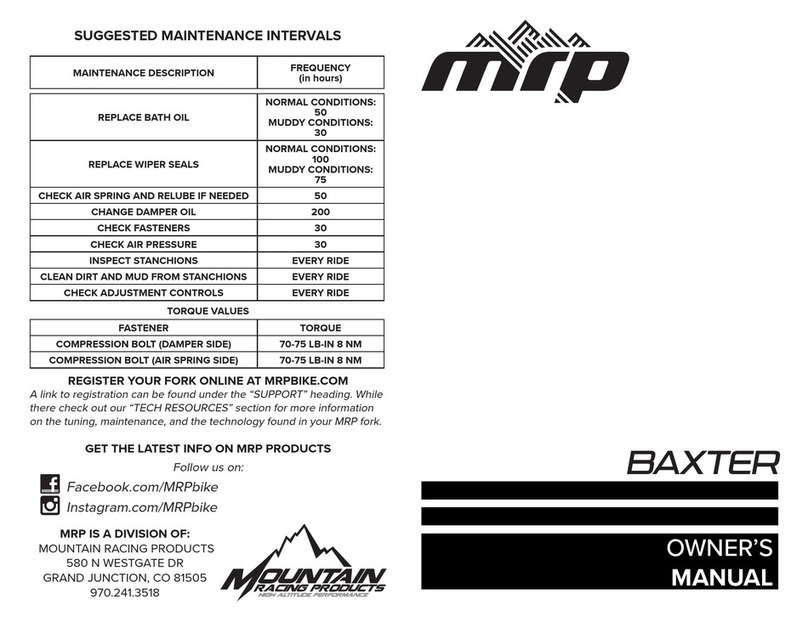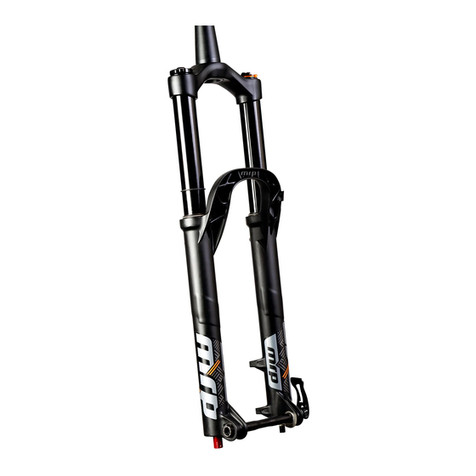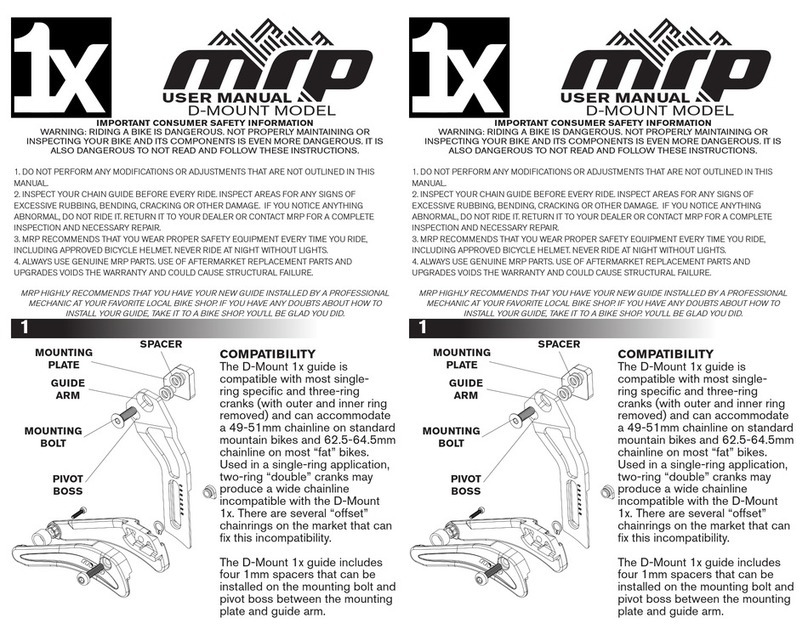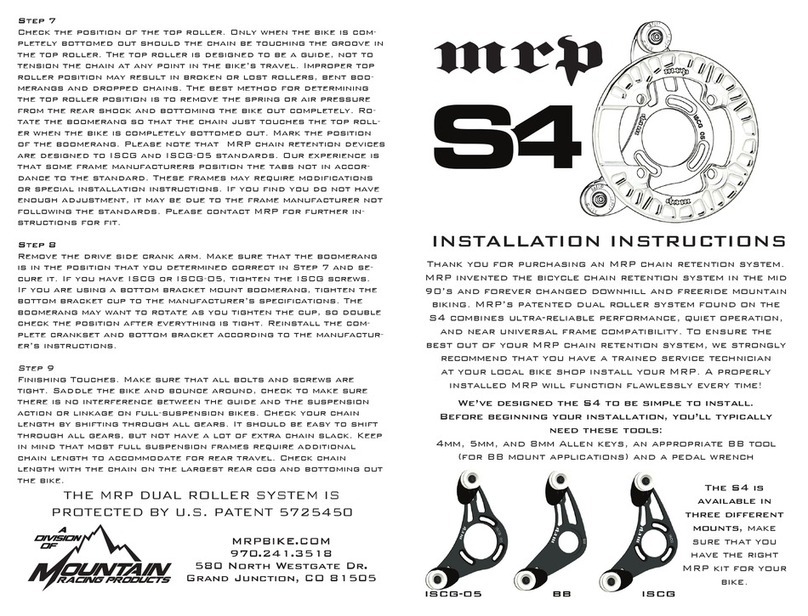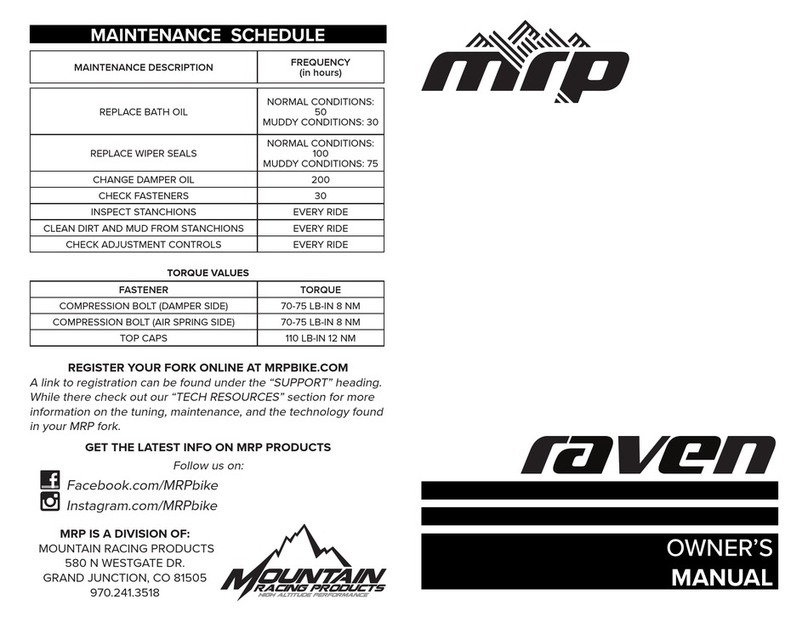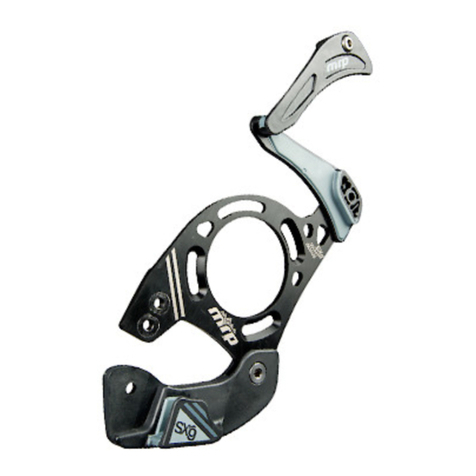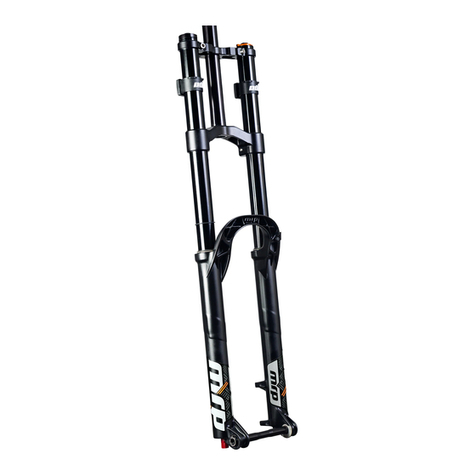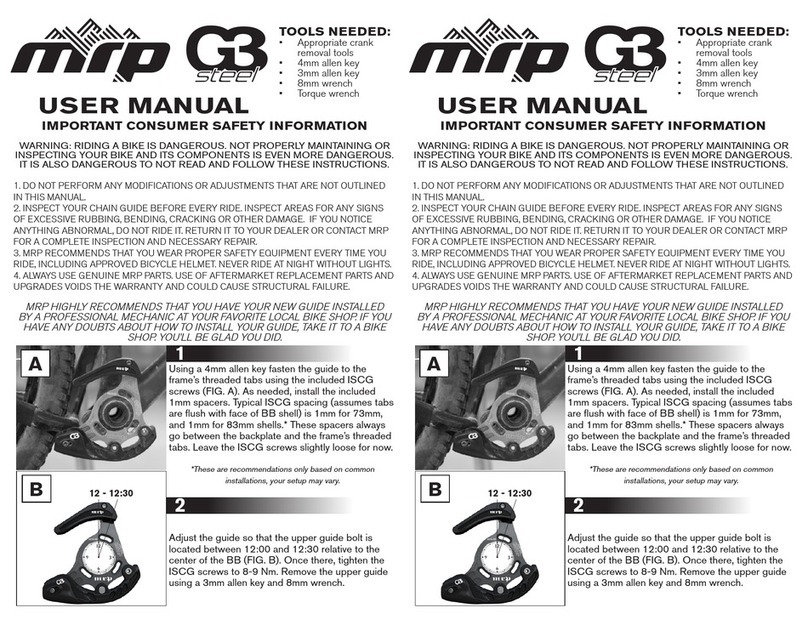IMPORTANT CONSUMER SAFETY INFORMATION
WARNING: RIDING A BIKE IS DANGEROUS. NOT PROPERLY
MAINTAINING OR INSPECTING YOUR BIKE AND ITS
COMPONENTS IS EVEN MORE DANGEROUS. IT IS ALSO
DANGEROUS TO NOT READ AND FOLLOW THESE
INSTRUCTIONS.
Thank you for choosing MRP. This owner’s manual is your
reference guide to using and fine-tuning your suspension fork
for optimum performance and comfort. It also provides important
information about the proper maintenance of your fork. Carefully
read this manual before installing your fork. If you need further
assistance, our experienced team is able to advise and assist you
to find the exact set up to meet your personal needs.
The fork is an important part of your mountain bike and
this owner’s manual explains how to install and use it properly.
We recommend that it be installed by a qualified bicycle
mechanic. Improperly installed forks might cause serious harm
to you and may severely damage your mountain bike. Never
take any chances with your safety. Before installing and using
your new fork, carefully read this owner’s manual to learn the
correct installation and adjustment procedures and avoid the
consequences of an incorrect installation or improper adjustment.
When your fork requires an oil change or other internal
maintenance, MRP and experienced suspension service centers
are best qualified to provide the necessary service or repairs.
FORK INSTALLATION
1. Remove your old fork from the bicycle. Measure the diameter and
length of your old fork’s steerer tube to ensure that your new steerer
tube is the correct diameter and sucient length for the installation.
If your MRP fork has a tapered steerer tube, be sure to leave enough
room above the taper to allow for proper stem installation.
2. Remove the crown race from your old fork.
3. Press the crown race onto your new fork. (See Figure #1)
4. Preassemble the fork on the bike with the headset, stem, and spacers
(optional). Refer to your stem manufacturer’s instructions to determine
how much room is needed to clamp the stem.
5. Mark the steerer tube at the top of the stem. The steerer tube will now
need to be cut to the correct length. Disassemble and cut 3mm (1/8”)
below the mark. Consult your dealer or mechanic if you don’t have the
proper tools to cut the steerer tube.
WARRANTY:
MRP suspension products are the highest quality and as such are
warranted to be free from defects in materials and workmanship
for a period of one year from the date of purchase for the original
purchaser. If date of purchase cannot be verified by product
registration or proof of purchase then the warranty is one year from
the date of manufacture. On receipt of the product by MRP, if it is
found to be defective, MRP will determine replacement or repair of the
product at its sole discretion. MRP shall not be liable for any indirect,
special or consequential damages. Warranty does not apply to any
product that has been installed improperly or adjusted using methods
not outlined in this manual. Warranty also does not cover products
that have been misused or products that have missing/altered serial
numbers. This warranty does not cover breakage or damage that
may result from crashes, falls, or abuse. Normal wear and tear items
such as; seals, wipers, bushings, stanchion coating, stanchions, piston
bands, foam rings, bottom out and top out bumpers, or damage
caused by lack of proper maintenance as outlined in this manual is not
covered by this warranty.
What to do if you need warranty inspection or service:
1. Go to MRPbike.com and locate the warranty contact form in the
support section of the site. Alternatively, call or email MRP (info@
mrpbike.com) about the troubles you are having and to set up a RA#
(Return Authorization Number).
2. Carefully pack and ship your product, be sure to insure the package in
case it is lost or damaged in transit. Clearly write the RA number on the
outside of the box. (Only the return shipping to the customer is covered
under warranty)
MAINTENANCE LOG
DATE PROCEDURE






